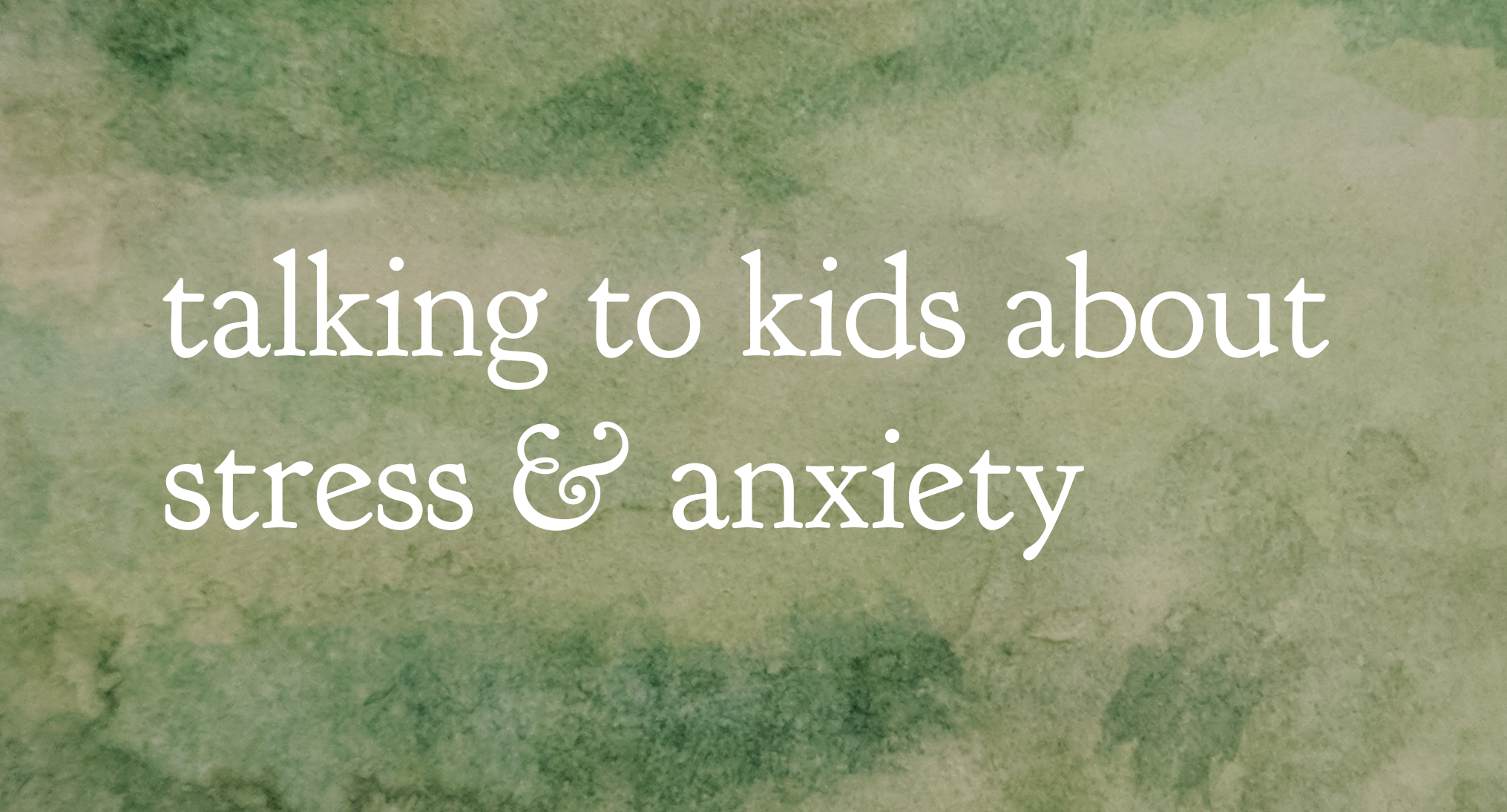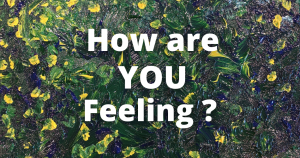The best way to talk to children about stress, anxiety and strong emotions is by making it normal and frequent and by modeling when you are feeling emotions yourself.
The goal is not to be stress or anxiety free – but to learn how to stress better, to use our stress to help us and to identify what the stress is telling us. It is a call to action. You can also use your own stress as a teaching tool for your kids.
When we are in the middle of anxiety or stress, we can use the high adrenaline to help us do something scary by saying, “this is going to be fun!” “this is exciting!” Practice saying this out loud when you are anxious yourself.
Thinking about stress/anxiety as a problem or something to fear isn’t helpful – it creates more anxiety and keeps us in it.
Moderate levels of stress/anxiety is good and helps keep us safe – mentally, physically, emotionally, etc.
So, when we feel anxiety of any kind (even severe), mental thoughts or physical or emotional symptoms, consider it as our body’s way of talking to us – that’s all. Talk about what your own body is telling you and ask your child, “what is your body trying to tell you?”
Our body may be telling us there is a real threat, or it may be a perceived threat – either way, its important to find out what the cause is and validate it and then we can do something about it instead of just be stuck in fear.
If we can view the symptoms of stress/anxiety as our friend, a helper, then we don’t need to fear it. We can actually invite it and befriend it.
This may sound strange, but the best way to deflate symptoms of anxiety is to focus on what physical and emotional symptoms you are having and welcome them, invite them to even increase and let them know you are glad they are happening.
Then, you really try to feel what you are feeling and try to describe what it is like, allowing it to happen INSTEAD of resisting it, trying to make it go away, thinking you are bad or weak for having it, or insisting that it resolve right now.
Resisting it or fighting actually can cause it to increase
One way to teach a child about stress and anxiety is by creating a fictional character. This is done when she is in a happy calm mood.
Help your child create a fictional character that she can call her stress or anxiety. Maybe draw a picture of a funny shaped little character that makes her laugh instead of fear it. Let her color it, name it and describe it.
Talk about how this funny little guy comes to visit her when something isn’t quite right and sometimes even when everything is right, he just randomly appears. She can practice talking to her character, welcoming him for a visit when he comes, telling him he can stay as long as he wants to.
She allows her little friend to stay and she just describes what she is feeling. She’s practicing feeling emotions. The idea is that stress isn’t bad and we can learn how to accept and use stress, to stress “better”.
Then, when the stress cycle completes and she’s feeling normal again you can talk about what might have caused the flooding of stress or anxiety and what it could be telling her.
Another method is to have a calming corner or soothing station in your home.
Place soothing objects here that your child likes such as pillows, bean bags or soft or weighted blankets or chairs. Relaxing pictures, music, and small sensory toys can be helpful as well. These are things like fidget toys that are interesting to touch, manipulate or watch (like colored oil in water). See my instagram highlights for ideas.
Place a list of emotion words or pictures on the wall or nearby so you can help your child name the emotion he is feeling.
You’ll introduce this area to your child when they are calm, teaching them about different emotions and what they feel like, talking about the emotions’ different colors, shapes and places they might feel the emotions in their body.
Demonstrate when you are feeling emotions yourself. Talk about what it feels like and label the emotion.
Then, when your child is upset, invite them to go to their calming corner. Some children will just want to unwind with the sensory objects and be alone. Others may want you to stay with them, holding them or just being close. Ask if they know what they are feeling in their body and what emotion it is.
They may or may not want to do this the first time, but just keep introducing and modeling without pressure, force or judgement.
I’m doing free sessions for missionaries and parents. Schedule a time for a FREE session. Have a quick question? Shoot me an email at info@jillfreestone.com. I’d love to hear from you.




